Table of Contents
Why Quality Espresso Beans Matter
Every great espresso starts with quality espresso beans. They’re not just fuel—they shape your shot’s flavor, aroma, and body. No matter which machine you use, subpar beans will hold you back.
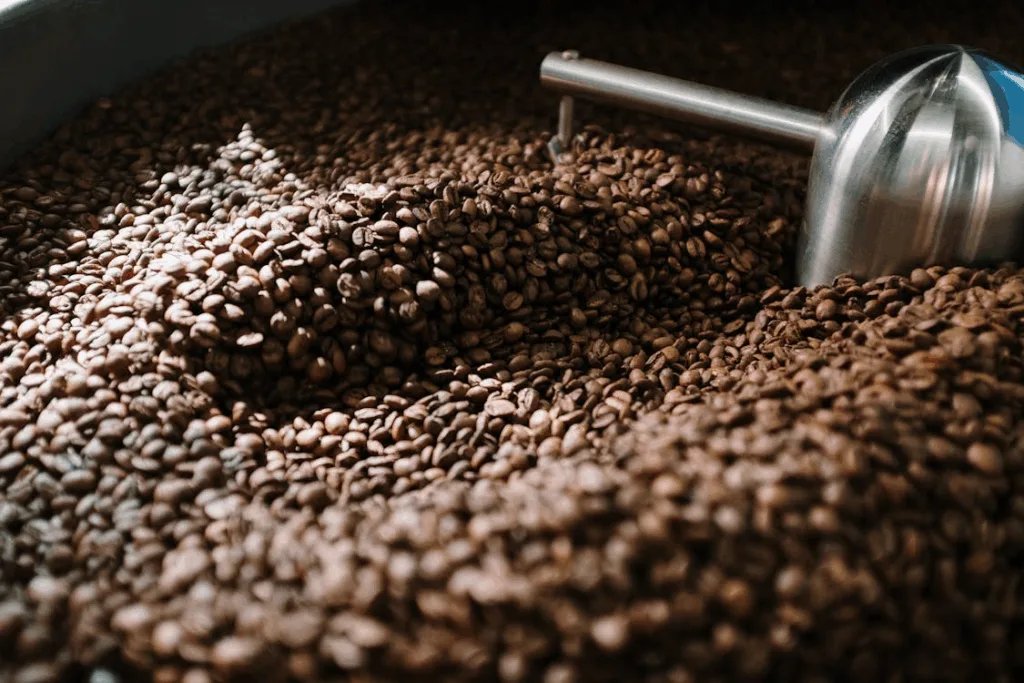
Flavor, Not Just Caffeine
Good beans deliver a symphony of flavor: chocolate, caramel, fruity notes, floral hints—or a balanced, bold clarity. Cheap or stale beans taste flat, sour, or bitter, even if brewed perfectly .
Freshness Makes a Difference
Espresso relies on carbon dioxide released by fresh beans to create that professional crema. Beans peaked between 7–21 days post-roast produce the richest flavor and crema .
Consistency in Every Cup
High-quality beans, especially blends crafted for espresso, behave reliably. With the right roast, they’re more forgiving: grind size, dose, and tamp have predictable outcomes—no curveballs.
Machine Longevity
Well-processed beans reduce oils and fines that clog grinders and group heads. Feeding your machine quality beans is like using good gas in a car—it works smoother and lasts longer.
How Espresso Beans Differ from Regular Coffee
Many people wonder: **Are espresso beans different from regular coffee beans**? The answer is both yes and no. They start off the same—typically Arabica or Robusta beans—but how they are roasted, labeled, and used makes all the difference.
Roast Profiles and Labeling
“Espresso beans” are usually roasted darker than beans meant for drip coffee. A darker roast helps oils surface, contributing to body and crema—essential for espresso. However, any bean can be used for espresso if ground and brewed properly.
Grind Matters Most
Espresso requires a finer grind to ensure the short, high-pressure extraction extracts enough flavor. In contrast, drip and French press use coarser grinds for longer brew times .
Flavor & Crema Differences
Because of pressure and roast, espresso beans offer a more intense, concentrated flavor with a creamy foam (crema) on top. Medium roasts actually often create better crema than ultra-dark roasts .
The Bottom Line
In essence: **They’re the same seeds, but the treatment makes the difference**. Specialty roasters label beans as “espresso” based on roast and grind suitability, not botanical variety .
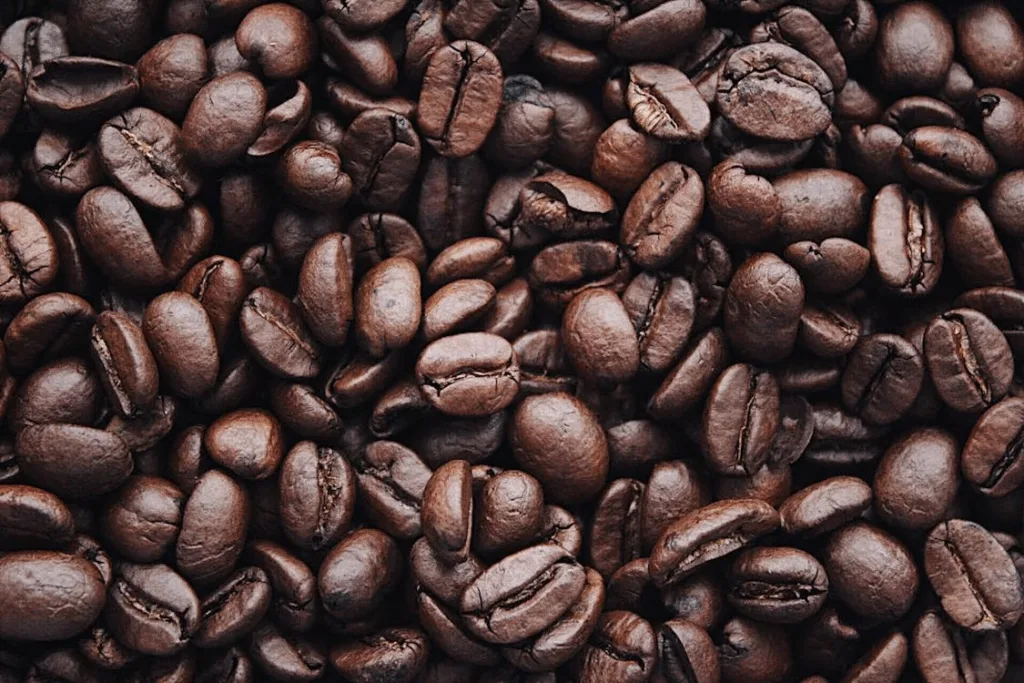
Roast Levels & What They Mean for Espresso
Roast level dramatically affects how your espresso beans taste. Whether you crave bold chocolatey notes or something lighter and fruity, the roast unlocks different layers of flavor and mouthfeel.

Light Roast
Light-roasted espresso beans are uncommon but trending. They offer bright acidity, floral aromas, and higher caffeine. However, they require precise grinding and temperature control to avoid sour extractions.
Medium Roast
Medium roasts balance acidity and body. They’re ideal for highlighting origin characteristics while still delivering crema and richness. Many specialty blends now favor medium roasts for their versatility in milk-based drinks.
Dark Roast
The traditional pick for espresso. Dark-roasted beans bring bold flavors like chocolate, toasted nuts, and caramel. They’re less acidic, offer deeper crema, and are forgiving during brewing. However, too dark and you risk bitterness.
Choosing the Right Roast
There’s no “best” roast. It’s about your taste and machine. For milk drinks, medium to dark works best. For black espresso, light to medium can shine with the right dial-in. If you’re new, start with medium roast and experiment from there.
Arabica vs Robusta – What’s Better for Espresso?
When shopping for espresso beans, you’ll often see terms like Arabica and Robusta. These are two different species of coffee—and they each bring something unique to the shot.
Arabica: The Premium Choice
Arabica beans are known for their smooth, complex flavors. They tend to be less bitter, more aromatic, and naturally sweeter. Most high-end espresso blends are 100% Arabica or Arabica-forward, especially in specialty coffee.
Robusta: Stronger, Bolder, More Caffeine
Robusta beans contain nearly twice the caffeine of Arabica and offer a punchy, earthy taste. They’re also more affordable and add a thicker crema. This makes them popular in traditional Italian blends and budget-friendly options.
Blended Espresso: Best of Both Worlds?
Many espresso roasts use a blend—typically 80% Arabica and 20% Robusta. This combo provides rich flavor from Arabica and crema boost from Robusta, striking a balance between taste and texture.
Which One Should You Choose?
If you enjoy nuanced, aromatic espresso or black shots, go for 100% Arabica. If you prefer a bold, crema-heavy shot or milk drinks, blends with Robusta can add power without complexity loss.
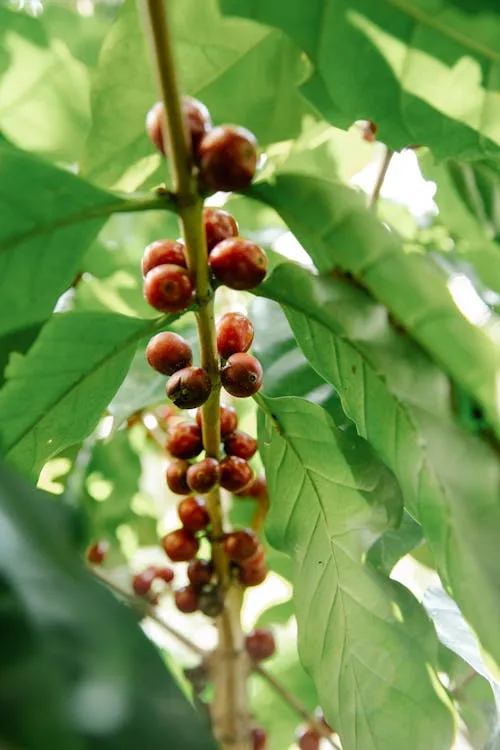
What to Look for on Espresso Bean Packaging
Not all espresso beans are created equal—and the packaging tells you more than you think. Knowing what to look for can help you avoid stale, low-quality beans and choose a bag that actually delivers flavor.
Roast Date vs Expiration Date
Always look for a roast date, not just a “best before” label. Espresso beans are at their peak flavor 7 to 21 days after roasting. Many supermarket bags are already weeks old by the time you buy them.

Whole Bean vs Pre-Ground
Espresso beans should always be whole bean if you want the freshest flavor and crema. Pre-ground beans lose aroma quickly and limit your ability to dial in grind size. Invest in a good grinder for the best results.
Roast Level & Bean Type
Check if the label mentions dark, medium, or light roast—and whether the beans are Arabica, Robusta, or a blend. Quality roasters often provide origin info and tasting notes, too.
Packaging Type
Good espresso beans come in valve-sealed bags with minimal oxygen exposure. Avoid clear bags or bulk bins—they allow light and air to degrade the beans faster.
Still unsure what to pick? Check our Espresso Beans category for product reviews, guides, and beginner tips.
For even more packaging guidance, the Perfect Daily Grind has a great breakdown of what labels really mean.
Whole Bean vs. Pre-Ground Espresso: What’s Best?
Choosing between whole espresso beans and pre-ground espresso is one of the first steps in building your ideal espresso ritual. Each offers advantages depending on how much control, freshness, and convenience you want.
Why Whole Beans Win on Flavor
Whole beans are the gold standard for flavor and freshness. Grinding just before brewing allows for optimal extraction, fuller crema, and the bold complexity espresso lovers crave. If you’re using a burr grinder, the difference is night and day.
When Pre-Ground Espresso Makes Sense
Pre-ground espresso is more convenient—especially if you’re in a hurry or don’t have a grinder. It’s consistent and ready to go, but it oxidizes quickly. That means the flavors fade faster, and you lose the nuanced oils that make espresso shine.
Who Should Choose What?
If you have a grinder or plan to invest in one, whole beans are worth it. But for casual drinkers or busy mornings, pre-ground isn’t the enemy—it just comes with trade-offs.
Need help choosing a grinder? Check out our Grinders & Gear category for curated recommendations.
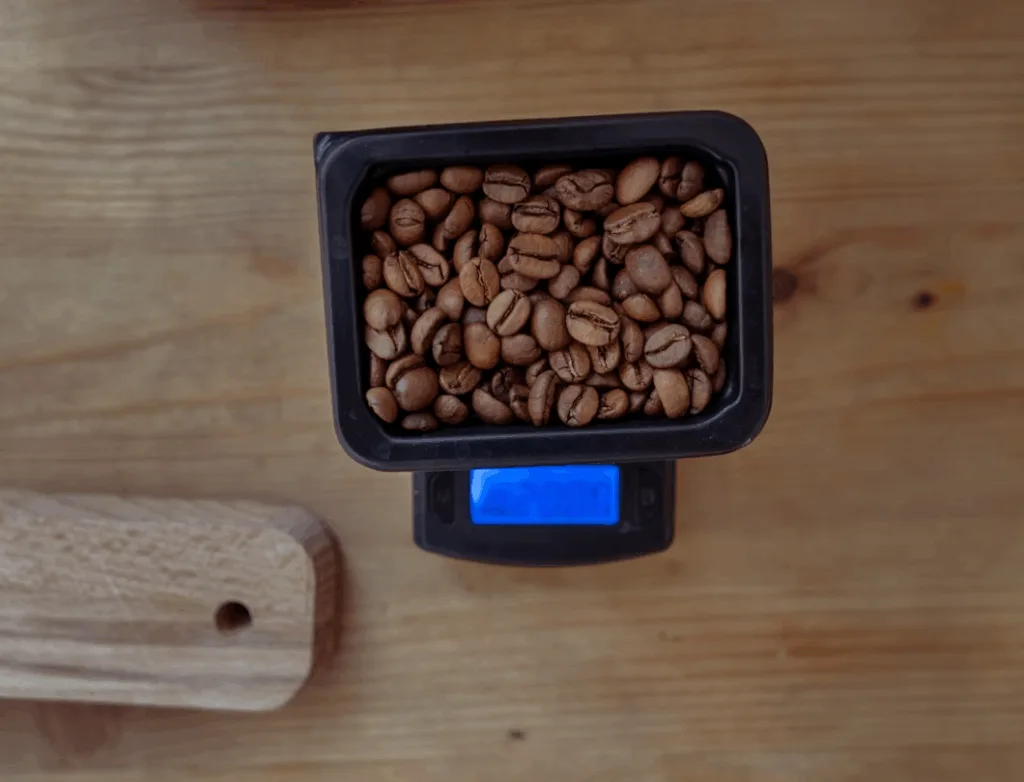
How Grind Size & Consistency Impact Espresso Quality
The grind size of your espresso beans is one of the most critical—and often misunderstood—factors in brewing a perfect shot. It determines how water interacts with the coffee grounds, which directly affects flavor, strength, and crema. Whether you’re using Lavazza, Starbucks, or illy beans, dialing in the grind size can make or break your espresso experience.
Espresso Needs Precision
Unlike drip or French press brewing, espresso relies on high pressure and short extraction times. That means the grind has to be very fine—almost like powdered sugar—but not so fine that it clogs the machine or causes over-extraction. If the grind is too coarse, water will rush through too quickly, producing a sour, weak shot. If it’s too fine, the water struggles to pass through, leading to bitterness and excessive pressure.
The sweet spot lies in consistency. When each coffee particle is the same size, water flows evenly through the puck, extracting the oils, acids, and sugars in perfect harmony. This is what brings out the bold body and rich crema espresso is known for.
Why a Burr Grinder Matters
To achieve consistent particle size, a burr grinder is essential. Unlike blade grinders, which randomly chop beans and create uneven particles, burr grinders crush beans between two surfaces, allowing for precise grind control. This is especially important for espresso, where even minor inconsistencies can impact the entire cup.
Using pre-ground espresso? You’re relying on someone else’s idea of the “perfect grind.” But beans degas and lose freshness quickly after grinding. Whole beans + burr grinder = full control over flavor and aroma.
Ready to upgrade your gear? Check out our curated list of espresso grinders and gear.
Grind Adjustment Tips
- Sour or weak shot? Your grind is likely too coarse. Adjust finer.
- Bitter and harsh? The grind is probably too fine. Go coarser.
- Inconsistent shots? Clean your grinder and check for calibration issues.
Grinding fresh for each shot unlocks the best flavor potential of your espresso beans. Whether you’re working with specialty beans or supermarket classics, grind control is a non-negotiable part of your setup.
Want to explore more tools that impact shot quality? Browse the full espresso accessories collection on EspressoInsider.com.
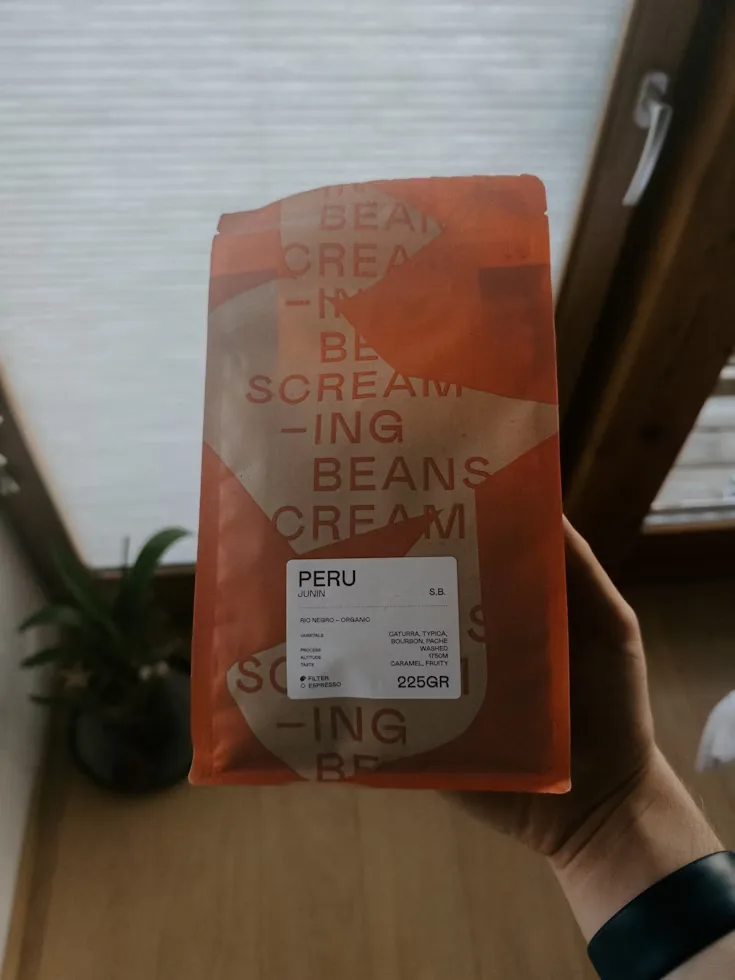
Understanding Roast Levels: How They Shape Your Espresso Flavor
One of the most exciting—and often confusing—parts of choosing espresso beans is deciding on a roast level. Light, medium, or dark? The roast you choose doesn’t just change the color of the beans—it transforms the entire flavor experience in your cup.
Light Roasts: Bright & Complex (But Rare for Espresso)
Lightly roasted beans retain more of the coffee’s natural origin characteristics. Think citrus, berry, floral, or even tea-like notes. While light roasts are popular in the third-wave pour-over world, they’re harder to tame in espresso form. The high acidity and lack of developed body can make them feel underwhelming unless dialed in precisely.
If you’re experimenting with light roasts, a well-calibrated espresso machine and grinder combo is essential. You may need to adjust pressure, temperature, and grind settings for a balanced shot.
Medium Roasts: Balance of Body and Brightness
Medium roasts are the sweet spot for many espresso drinkers. They maintain some fruity acidity and origin notes while developing deeper caramel, nutty, and chocolate flavors. This level of roast tends to be more forgiving in espresso brewing, offering a flavorful and balanced shot with decent crema.
Lavazza Super Crema Espresso is a great example of a medium roast that delivers consistently smooth, well-rounded espresso. It’s one of the best-selling blends for a reason.
Dark Roasts: Bold, Intense & Traditional
Dark roasts are what most people associate with traditional espresso. They produce a bold body, rich crema, and classic smoky or chocolaty flavor. However, they also mute the origin characteristics of the bean, replacing complexity with roasted depth.
Brands like Starbucks Espresso Roast offer a dependable dark roast profile that works well in most home machines. If you like a bold kick, this is your territory.
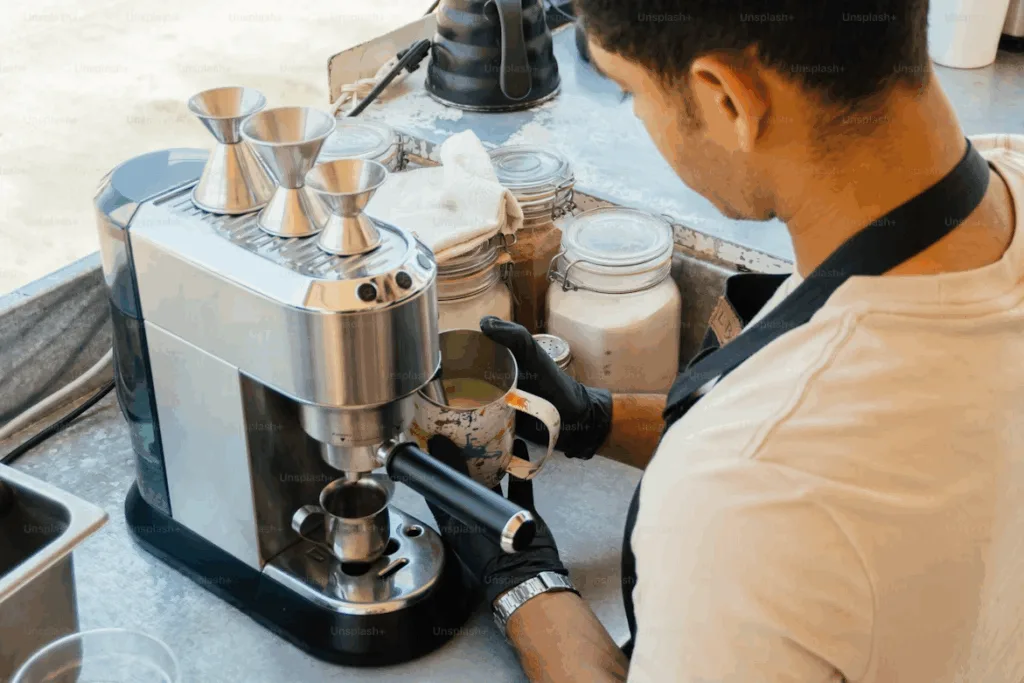
Roast Level Tip: Pair with Brew Method
While espresso brewing is a single method, there are different styles—straight shot, lungo, macchiato, etc. Lighter roasts often work better in milk-free drinks, where you can appreciate their complexity. Darker roasts hold up better with milk-based drinks like lattes and cappuccinos.
For more brewing advice, check out our growing library in the Barista Guides section.
Roast Freshness & Storage
Regardless of roast level, freshness matters. Beans should ideally be used within 2–4 weeks of roasting for best results. Use an airtight container, store in a cool dark place, and avoid refrigeration or freezing. For long-term freshness, consider vacuum-sealed packaging or one-way valve bags.
Curious how roast interacts with grind? Revisit our section on Grind Size & Consistency to connect the dots.
How to Decode Espresso Flavor Notes
Ever stared at an espresso bag label and seen words like “citrus zest,” “hazelnut finish,” or “earthy body”—and wondered what they actually mean? These aren’t just marketing terms. They’re your roadmap to flavor. Understanding espresso tasting notes helps you find beans that match your taste preferences, so you don’t waste money or end up with a bitter surprise.
What Are Espresso Flavor Notes?
Espresso flavor notes describe the sensory experience you’ll get from a shot: aroma, taste, mouthfeel, and aftertaste. They’re influenced by a bean’s origin, altitude, processing method, roast level, and even the grind and machine you use. It’s similar to wine tasting, with distinct categories like chocolatey, fruity, nutty, floral, and spicy.
For example:
- Chocolate & Nutty: Common in Latin American beans. Think cocoa powder, almonds, or hazelnut. These offer smooth, familiar comfort.
- Fruity & Bright: Typical of East African beans. Notes of berries, citrus, and even tropical fruits add vibrant acidity.
- Earthy & Spicy: Found in Indonesian beans. Expect deep, herbal, or smoky flavors with heavy body.
How to Taste Espresso Like a Pro
Start by taking a small sip and letting the espresso coat your tongue. Focus on the front of your mouth (sweetness), sides (acidity), and back (bitterness). Note the aroma before and after sipping. Great beans will show complexity—layers of flavor that evolve with every sip.
Keeping a tasting journal is one of the best habits you can build. Just jot down the name of the beans, roast level, flavor notes, and how you brewed them. Over time, you’ll build your own flavor profile guide and confidently choose the best espresso beans for your taste.
How Flavor Impacts Brewing Choices
If you’re a fan of lattes or cappuccinos, beans with chocolatey or nutty undertones cut through milk beautifully. Prefer straight espresso shots? A brighter, fruitier profile can bring a clean, lively finish. Understanding flavor allows you to pair beans with your drink style and machine settings.
Want to Dive Deeper?
The Barista Guides on our blog cover how brewing variables like water temperature and grind size affect flavor clarity. And if you’re ready to upgrade your gear, check out our curated picks in the Grinders & Gear section.
Understanding espresso flavors isn’t just for experts—it’s for anyone who wants better mornings. Once you decode your preferences, every cup becomes more intentional, more delicious, and way more satisfying.
How Roast Level Impacts Espresso Beans
When it comes to espresso, roast level isn’t just a detail—it’s a game-changer. Whether you love bold, smoky crema bombs or smooth, balanced pulls, your choice of roast can make or break the flavor and texture of your cup.
Understanding Roast Levels
Roast levels are typically categorized as light, medium, and dark—but within espresso brewing, things get more specific. Here’s how each roast impacts flavor, body, and brewing behavior:
- Light Roast: Not commonly used for traditional espresso. These beans retain more origin flavors (fruity, floral, acidic) but can taste sour or underdeveloped under high pressure. Better suited for pour-over or AeroPress.
- Medium Roast: Versatile and balanced. Medium roasts strike a sweet spot for espresso lovers who want flavor complexity without overwhelming bitterness. They often feature chocolatey or nutty undertones with a mild acidity.
- Dark Roast: The classic choice for espresso. Dark roasts offer full-bodied richness, low acidity, and bold flavors like molasses, tobacco, or dark chocolate. They’re more forgiving on cheaper machines and great for milk-based drinks.
Why Roast Profiles Matter in Espresso
The high pressure and short extraction time of espresso amplify whatever’s in the bean. A bean that’s over-roasted can taste burnt; one that’s too light may come out sour. That’s why roasters often create blends specifically labeled as “espresso roast”—designed for balance under pressure.
Here’s a general rule of thumb:
- Drinking straight shots? Try a medium roast with origin clarity and pleasant acidity.
- Making milk drinks like lattes or flat whites? Go dark for maximum flavor carry-through.
- Have a budget machine? A darker roast can mask temperature inconsistencies and bring bolder crema.
How to Spot Roast Info on Packaging
Some brands clearly state the roast level, but others might use less obvious terms. Look for these clues:
- “Espresso Roast” usually = dark roast
- Flavor notes like “molasses,” “toffee,” or “roasted nut” hint at medium to dark roasts
- Mentions of “bright acidity” or “citrus” often mean a lighter roast

Not Sure What You Like? Try a Roast Flight
If you’re unsure where you land, try a roast sampler or “roast flight” from a local roaster or a brand like Lavazza or Illy. Compare shots from each roast using the same machine and grind, and note the differences in body, bitterness, and flavor notes.
Learning to identify roast preferences is essential if you’re dialing in a home setup. It informs your grind size, shot time, and even milk steaming temperature.
Pro Tip:
Roast matters even more if you’re using a non-pressurized basket or manual espresso machine. Lighter roasts demand more precision—like finer grinds, higher pressure, and better temperature stability. Dark roasts, while less complex, are far more forgiving.
For more brewing optimization, check out our Barista Guides and learn how roast level connects to grind adjustments and water temperature.
Top-Rated Espresso Beans You Can Buy Right Now
Whether you prefer bold intensity or smooth balance, choosing a reliable, well-reviewed espresso bean is key. Here are three top-selling espresso beans from Amazon that are trusted by thousands of home baristas:
1. Lavazza Super Crema Espresso Whole Bean Coffee Blend
This Italian classic is a go-to for consistent crema, mild acidity, and a smooth body. Great for both straight espresso shots and milk drinks. It’s a blend of Arabica and Robusta, giving you a balanced cup every time.

2. Starbucks Dark Roast Whole Bean Espresso
Dark, rich, and roasted to perfection, Starbucks Espresso Roast is perfect for those who want that signature bold taste. Works exceptionally well for lattes and cappuccinos. It’s also ideal if you’re using a super-automatic espresso machine.
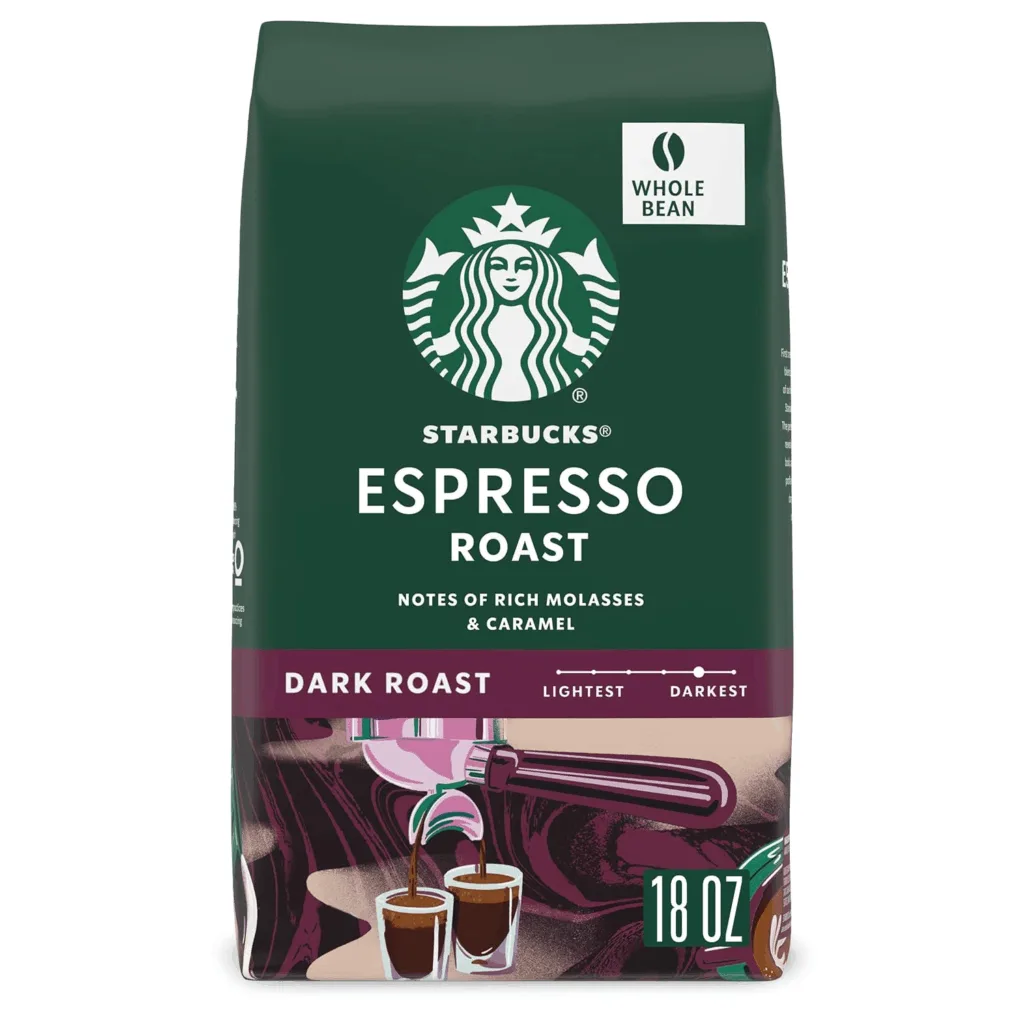
3. Illy Intenso Bold Roast – 100% Arabica
Illy’s Intenso is made for espresso purists. It delivers a bold, full-bodied flavor with deep chocolatey undertones, and it’s made from high-grade Arabica beans. Illy’s airtight packaging keeps the beans fresh longer, which is great for low-volume home use.
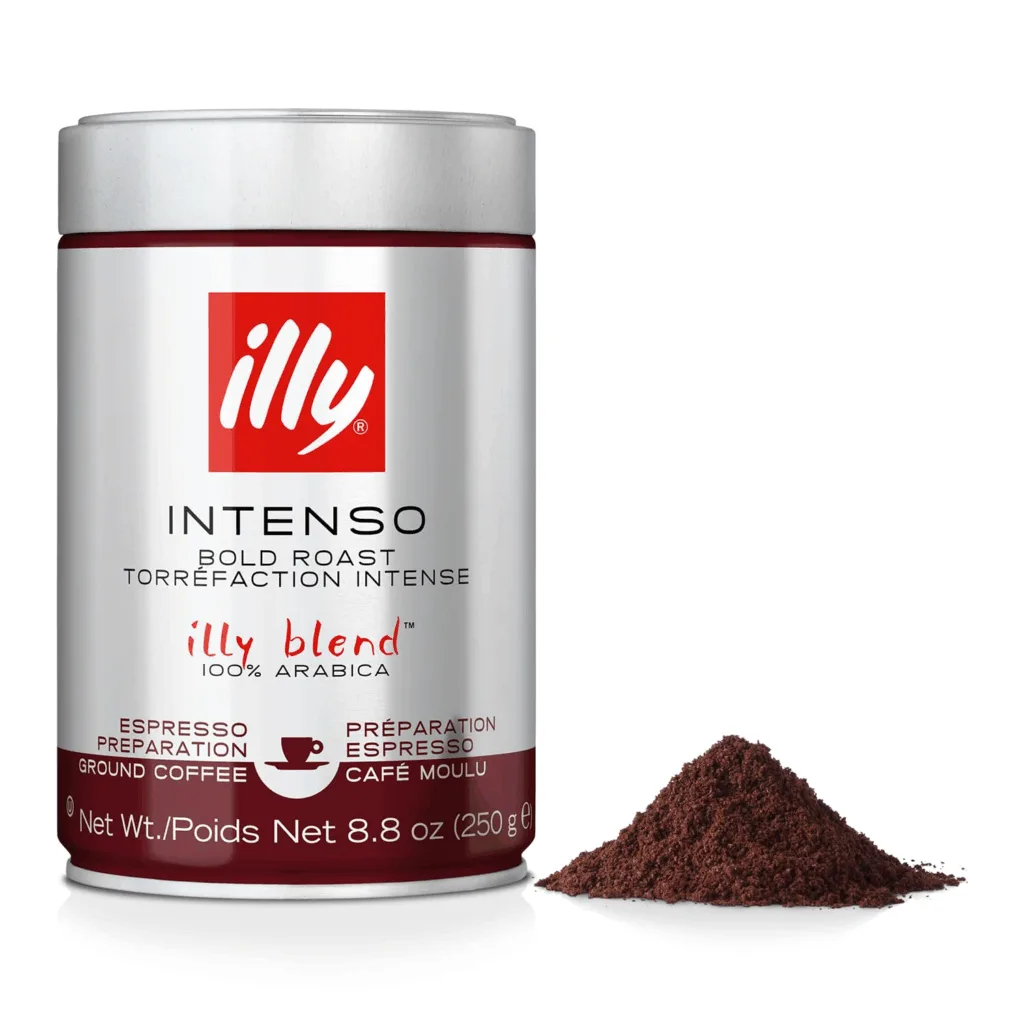
Why Grind Size Matters More Than You Think
Even the best espresso beans can fall flat if you don’t get the grind right. In espresso brewing, grind size directly controls extraction time, flavor balance, and crema quality. If your shots are too bitter, sour, or weak—it’s probably not your machine or your beans. It’s your grind.
Espresso Requires Precision
Unlike drip coffee or French press, espresso requires a very fine and consistent grind. We’re talking powdery, almost like table salt. This ensures the pressurized water flows through slowly and evenly, extracting all those rich oils and complex flavors packed inside the bean.
Grind too coarse and the water rushes through—resulting in a sour, under-extracted shot. Grind too fine and your machine may choke, producing bitter, muddy coffee with over-extraction. The sweet spot? Around 25–30 seconds of extraction time for a double shot.
Dialing In: The Barista’s Balancing Act
“Dialing in” your espresso means adjusting grind size, dose, and shot time until you hit the flavor profile you’re after. Even small changes can have big impacts. Here’s a simple process:
- Start medium-fine with fresh beans and a 1:2 ratio (e.g., 18g in → 36g out).
- Time your shot. If it pulls in under 20 seconds, make the grind finer.
- Taste and adjust. If it’s too bitter, go coarser. Too sour? Finer.
If you’re switching between espresso beans (e.g., from Lavazza to Illy), you’ll likely need to adjust your grinder—even if the roast level is similar. That’s because oil content, density, and bean size can all vary subtly between brands.
Get a Grinder That Does It Right
Not all grinders can grind fine enough for espresso. Blade grinders? Not even close. You need a burr grinder—preferably one with stepless or micro-adjustments so you can fine-tune your espresso grind. It’s one of the most worthwhile investments you can make for consistent, high-quality shots.
If you’re new to espresso, we recommend checking out our Grinders & Gear category for beginner-friendly burr grinder options that won’t break the bank.
How to Store Grounds (and Why It’s Not Ideal)
Grinding fresh is ideal—but if you must store pre-ground beans, use an airtight, light-blocking container and consume them within 3–5 days. Espresso grinds lose their aromatic oils fast. Pre-ground coffee will never match the flavor or crema potential of freshly ground beans.
Pro Tip:
If your grinder is inconsistent or dull, it could be sabotaging your espresso. Uneven particles extract at different rates, muddying the flavor. Look for grinders with hardened steel or ceramic burrs and clean them regularly.
The perfect grind is where great beans shine. And once you taste the difference, you’ll never settle for anything less.
Espresso Blends vs. Single Origin — Which Is Better?
When browsing espresso beans, you’ll often come across two types: blends and single origin. But what exactly do they mean? And which one should you choose for your morning shot?
What Are Espresso Blends?
An espresso blend is a mix of beans from different regions, farms, or even countries. Roasters combine them to balance body, acidity, sweetness, and crema. This helps create a consistent flavor profile that holds up well across different machines and drink styles—like lattes or cappuccinos.
Blends are also typically more forgiving. Because they’re crafted to taste balanced under a wide range of conditions, they’re ideal for beginners or home brewers using less precise equipment.
Popular Example: The Lavazza Super Crema Espresso is a medium roast blend from Central and South American beans, praised for its creamy body and hazelnut notes. It’s one of the best-sellers for good reason—it’s reliable and smooth.
What Are Single Origin Beans?
Single origin espresso comes from one region—or even one farm. These beans have a distinct flavor tied to the soil, altitude, and climate of that specific area. You’ll often find notes like jasmine, stone fruit, or dark chocolate shining through more vividly.
Single origin beans are perfect for espresso purists and those chasing unique flavor experiences. But they can also be trickier to brew—small changes in temperature or pressure may bring out unexpected bitterness or sourness.
How to Choose What’s Right for You
- Go with blends if you’re just getting started, like milk-based drinks, or want a consistent flavor every time.
- Try single origin if you brew espresso straight or enjoy dialing in flavor notes with precision gear.
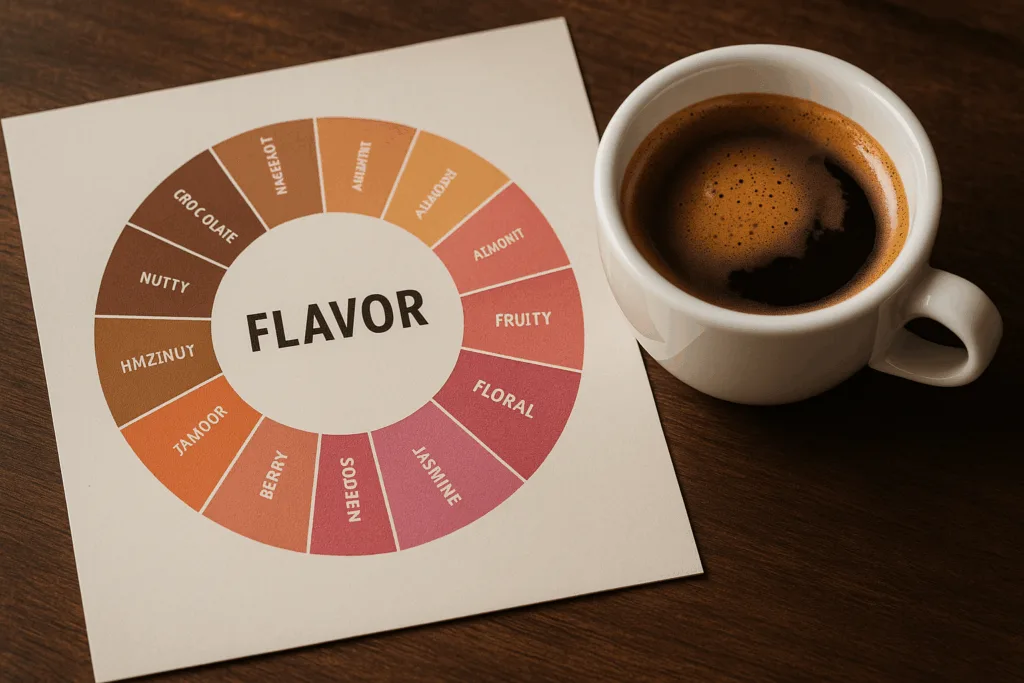
Pro Tip:
Consider experimenting with both. Keep a quality blend like Starbucks Espresso Roast on hand for daily use, and try a rotating single origin to expand your palate.
There’s no wrong choice—just different journeys in your espresso adventure. Whether you prefer consistency or complexity, understanding this difference empowers you to brew better with every cup.
Frequently Asked Questions About Espresso Beans
What’s the difference between espresso beans and regular coffee beans?
Espresso beans are typically roasted darker and ground finer than regular coffee beans. This helps produce the bold, concentrated flavor and crema associated with espresso.
While technically you can use any coffee bean for espresso, true espresso beans are curated for the brewing method’s pressure and intensity.
Should I buy whole espresso beans or pre-ground?
Whole beans are the best choice if you want the freshest flavor. Grinding right before brewing preserves the oils and aromas that define great espresso. If convenience is your top priority, opt for a trusted brand’s espresso grind—but be aware it may go stale quicker.
How long do espresso beans stay fresh?
Unopened espresso beans can stay fresh for up to 6–9 months. Once opened, aim to use them within 2–4 weeks for peak flavor. Always store them in an airtight container away from light, heat, and moisture. Avoid the fridge or freezer—they cause condensation.
Can I use espresso beans in a drip coffee maker?
Yes, but grind size is key. If you use finely ground espresso beans in a drip brewer, the result will be bitter and over-extracted. To adapt, use a medium grind and reduce the brewing ratio slightly. The flavor will be bold but smoother than traditional espresso.
Where can I find reliable espresso gear recommendations?
Right here on Espresso Insider, we provide detailed guides and roundups of the best espresso machines, grinders, and accessories.
And for something greener, our partner site FindGreenery.com does the same for artificial plants—adding beauty to your space without the upkeep.
Conclusion: Your Espresso Bean Journey Starts Here
Choosing the right espresso beans is more than a matter of taste—it’s about unlocking flavor potential, matching your brewing style, and enhancing every cup. Here’s what we covered:
- ☕ Espresso beans are roasted and ground for pressure brewing, delivering rich crema and bold taste unmatched by standard beans.
- 🌍 Bean origin and roast level matter—single-origin beans bring clarity, while blends offer balance. Medium to dark roasts work best for espresso.
- 🛠️ Grind size and freshness are non-negotiables. Always grind right before brewing or buy trusted pre-ground espresso beans.
- 🛒 Top-rated picks like Lavazza, Starbucks, and Illy are reliable, affordable options trusted by home brewers and baristas alike.
- 📦 Proper storage and dose control help maintain flavor and consistency over time.
Whether you’re a new home barista or a seasoned espresso lover, the right beans can transform your daily cup. Explore our Espresso Beans category for more guides, reviews, and pro tips.
Now that you’re bean-smart, why not take the next step? Dial in your grinder, prep your portafilter, and pull a shot worthy of your palate. Happy brewing!


Leave a Reply
You must be logged in to post a comment.